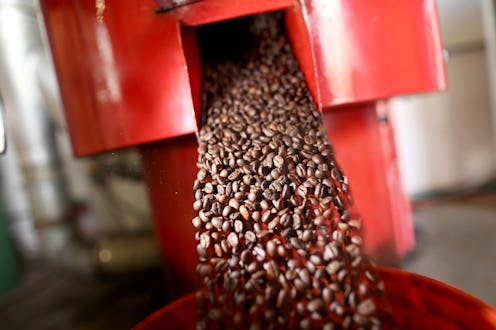
I’ll be honest: I don’t often find myself wondering, “Gee, how is decaffeinated coffee made, anyway?” This is largely due to the fact that I am generally of the opinion that decaf is for wusses. But hey, each to his or her own — and now, thanks to a recent video from Mental Floss, I know everything I didn’t think I needed to know about how caffeine is sucked out of coffee beans. TIL, right?
The video is inaugural episode of Mental Floss’ new webseries “The Big Question,” which seeks to uncover the answers to some of life’s biggest questions. Originally posed by someone going by the name “BekensDwarf,” this week’s Big Question involves decaf — specifically, how is it made when the caffeine is naturally part of the coffee bean in the first place? The results, as you might expect, are pretty fascinating; then again, I’m also the type of person who was positively mesmerized by those Sesame Street segments that went into crayon factories when I was a kid, sooooo… do with that what you will.
Anyway, according to host Craig Benzine, the first thing you should know is that decaf coffee isn’t always going to be totally caffeine-free; a study conducted in 2006 at the University of Florida found that, out of 10 different cups of decaf, only one had absolutely no caffeine. That cup was made with Folgers instant decaf coffee crystals, though, so really, no one should be drinking it. Ever. Because yuck.
From there, Benzine launches into how precisely the caffeine is extracted from the green coffee beans. Here, take a watch:
Of course, as Benzine points out, the really big question isn’t really “how do they make decaf?”; rather, it’s “why would anyone drink decaf in the first place?” I can think of only one answer that makes a certain amount of sense: “I like the taste of coffee, but it’s three o’clock in the afternoon and I don’t want to screw with my ability to sleep tonight.” Anything other than that? Is totally beyond me.
Now if you’ll excuse me, I have a coffee nap to go take. BRB.
Image: Joe Raedle/Getty Images